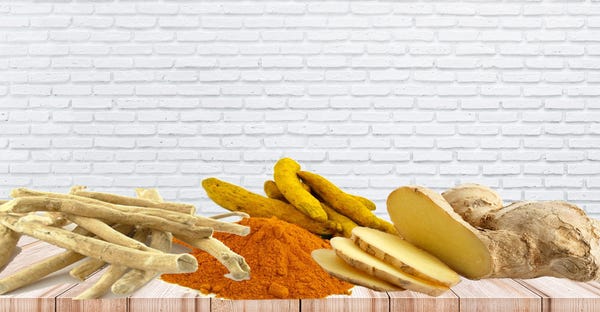November 9, 2018

If one thing is certain, the business of supplements is alive and kicking, or actually, growing. Estimates put sales at $46.3 billion for 2018, and supplements are expected to surpass the $50 billion mark to $52.2 billion in 2020.
These numbers are based on an anticipated growth rate of about 6 percent, with subcategories such as “organic” supplements outpacing the overall category with a reported 9 percent growth rate in 2017 on $1.3 billion in sales.
To put all of this in perspective, in 2006, Nutrition Business Journal reported supplement sales of $22.5 billion. Ten years later, this number was close to doubling at $41.1 billion and still climbing. If this isn’t enough to make you a believer, the merger and acquisition market has turned its eyes to health and wellness, with Nestle’s agreement in December 2017 to acquire Atrium Innovations (owner of Garden of Life, among other brands) for $2.3 billion just one of the many notable deals happening.
The size of the industry dollar-wise, combined with millennials’ growing consumer interest in supplements, has firmly placed dietary supplements on a trajectory for ongoing growth. So what’s moving the market? A few drivers stand out.
Growth drivers
So what is driving growth? Many of the same trends seen in healthy foods are spearheading growth in supplements. Brands with clean and simple ingredient profiles, high quality, minimally processed, non-GMO, plant-based supplements— even sprouted and fermented supplements along with powder and protein products—are in demand.
Organic supplements continue to increase in popularity, but if a product can prove to be clean even if it’s not organic, it can perform well.
“People are looking for clean ingredients. Not necessarily organic,” says Summer Auerbach, CEO of Kentucky-based Rainbow Blossom. “It seems so impossible to get rid of magnesium stearate, it’s everywhere and so many issues there. But big companies are pledging to get rid of unnecessary ingredients. People are asking and looking for better products and big companies are starting to respond to that.”
Companies that have made quality and transparency a priority are also seeing payoffs, says Starkie Sowers, director of education for Clark’s Nutrition Center in California. “The biggest thing consumers want to see is quality and transparency. You have to tell your quality and transparency story. If you are not telling it, you are losing sales and margins. Those are issues that continue to grow in the industry, it’s what we are expected to be.”
As for specific product categories, baby boomers continue to drive sales volume with 80 percent of baby boomers using supplements, according to the Council for Responsible Nutrition. They seek out products for anti-aging, disease prevention, inflammation and joint pain.
“Whatever the baby boomer generation is looking for, anything that is marketed to people over 40 or 55 years old, they outsell the regular, at least twice or three times more than the more general multis for younger men and women,” says Mark Stayton, sales and supplements manager at Martindale’s Natural Market in Pennsylvania.
With all of the focus on the gut microbiome, there is continued interest in probiotics and digestive health. Whether placed in a refrigerated set or on shelf, probiotics such as Garden of Life and Renew Life are still garnering strong sales. “It’s one of those products that people feel the results right away and then they tell their friends and family and that is supported by TV or radio ads,” says Mitchell Nol, director of business technology/supplement purchaser at Harvest Health Foods in Grand Rapids, Michigan.
Preventative maintenance is of interest to all consumers, while millennials also turn their attention to building immunity—focusing on products such as elderberry for themselves and their families—and overall health and wellness, including managing anxiety, stress and sleep issues.
As the popularity of plant-based and organic supplements rises, along with bone broths and protein powders, another pattern among consumers has started to emerge, that of products aligned with what Sowers calls micro-communities. “One of the biggest changes that we are seeing is the influence of micro-communities—keto communities, paleo communities. Ultimately, I am seeing a focus to where a lot of these micro-communities are driving some of the supplement sales,” he adds.
Still as powders—protein powders, greens or powdered collagen—have been strong performers, capsules are still paramount. “If it’s convenience driven, it is still capsules at the top,” says Sowers. “(Ultimately,) people want strong results. If they see or feel the difference, they don’t mind the delivery system.”
CBD is expanding, but it presents challenges
Supplement fads and trends have been known to percolate and fade, yet unanimous among retailers is the amazement at the growth of CBD. “We used to have the Dr. Oz hype. People would go crazy and want to buy raspberry ketones and then no one cared about it. But CBD is growing at a rate that I have never seen before,” says Nol. His experience is not unique. Natural products stores across the country are recording significant growth in CBD.
“The hunger for CBD is fascinating, but it shows me people are eager to find solutions that are not addictive that actually work and they can feel good about taking,” says longtime retailer Michael Kanter, owner of Cambridge Naturals.
Customers are taking CBD for many of the same reasons they take adaptogens—inflammation, anxiety, stress and sleep. Auerbach says a pain specialist in her town has been directing customers to Rainbow Blossom for CBD. He supports it, she says, because it is effective and he has said it is a good way to keep people off opioids. As sales of CBD have risen, she says a larger number of customers seek it out for pain relief and arthritis.
“Hemp-derived products have suddenly become a really significant portion of our business, almost overnight,” Auerbach says. “CBD sales felt like they were significant last year and yet this year they have grown like 2,000 percent.”
Sales have been so significant, Auerbach runs two sets of financials—one with CBD sales and one without them—to make sure leaders can accurately look at what is happening in all categories.
Still there are hiccups as companies navigate the right verbiage for marketing. Stores in California have hit a few roadblocks in selling CBD. There is some debate from county to county as to how to interpret FDA regulations and whether CBD can be sold in stores or has to be sold through dispensaries, according to Sowers. This has led many companies to stop using the name “CBD” and to instead label products as “hemp-derived” or to use terms like “concentrated phytocannabinoids.”
“California interprets the FDA law different than other states and is stipulating that you can’t sell CBD,” Sowers says.
CBD has also posed some merchandising and sales challenges for stores. Its high price tag and high demand have made it a perfect target for theft. Many stores carry it in an enclosed, locked glass case. This can isolate the product while at the same time draw attention to the product for customers who might not be familiar with it.
“We merchandise CBD in two different places,” Nol says. “First we have it in our single CBD set on the shelf. At our information desks we also have all of our CBDs in the glass case as well. A lot of people come to the information desk and the glass case draws attention. It shows the premium value of the product. When you pay $90 for a little bottle, you want it to look nice.”
As CBD starts to show up everywhere from ice cream shops to 7-Eleven, once again, the natural products store becomes the gatekeeper of quality. Kanter notes new companies approach his store every day to sell their CBD products. But just as with dietary supplements, not all of these companies are up to the quality standards each store expects. “Concerns are quality issues. We only deal with companies that can prove to us that what they say is in the product is in the product,” says Kanter.
While CBD products may be bringing new customers into stores, many retailers note that these customers walk into the store and make a beeline for the CBD product. They may not be familiar with other products in the store, and they are not necessarily interested in what other products natural stores have to offer. Stores are having to brainstorm to figure out how they can suggest other items, to capture these customers in another way.
“CBD is a big deal this year,” Stayton says. “We keep it separate in locked up cases, but we are trying to make space to move the cases to the supplement aisles. New customers are coming in for it, but we want to be able to show them other products for whatever interests they may have rather than just going straight to the CBD case.”
For those customers using CBD who are familiar with dietary supplements, retailers say the risk is that CBD sales can cannibalize some of the other herbal sales. “Instead of buying their valerian, ashwagandha or kava, they are going for CBD,” Nol says. “We see a decrease in some herbals while CBD is going through the roof. Customers are going to a different herbal instead. We do a lot with promotions, staff training and consumer seminars to get more education to everyone on herbals. CBD is a high-priced item, so non-CBD herbals can be presented as more affordable maintenance.”
Adaptogens, herbs and mushrooms

For many of the same reasons customers are turning to CBD, they are also looking at adaptogens, with ashwagandha still leading the charge in sales.
“The biggest growth in the last couple of years has been in ashwagandha,” Sowers says. “It’s slipped into so many formulas. Ancient Nutrition uses it in almost all of its products, it is like the ginseng from the ’70s and ’80s. Turmeric is also still very strong. It’s a great herb of choice, and friendly with so many folks. People are happy with it especially for inflammation.”
On the herb front, Stayton agrees that turmeric and ashwagandha are still big, along with ginger, prostate formulas (for older clientele), as well as herbal stress and sleep formulas. He adds that younger people are driving the selection of new herbal products. “They want organic. Not just ginger capsules, they want organic ginger capsules,” he says. For this reason, he has brought in a lot of Oregon’s Wild Harvest single herbs because they are organic. Noting that he falls in the baby boomer category, he adds, “My age has always bought herbs but not looking for organic as much.”
Beyond herbs, mushrooms are making a comeback. Host Defense, Mushroom Science, Four Sigmatic, there are now mushroom products that include capsules, powders, tea bags and chais. Stores remain selective in which they carry but the companies that are making quality mushroom products are being well-received. Stayton sees this resurgence as part of the plant-based movement.
Collagen, collagen and more collagen
Just like CBD, there is a universal agreement that collagen is also taking off, showing up in everything from powders and capsules to creamers and waters. “Collagen, collagen, collagen, and bone broth,” Sowers says. “The nice thing about collagen is that people that come in with wrinkly skin, when you do the full dosage it really seems to make a plump difference in the skin. So they are seeing it and willing to go the mile of taking it.”
About the Author(s)
You May Also Like
.png?width=700&auto=webp&quality=80&disable=upscale)




